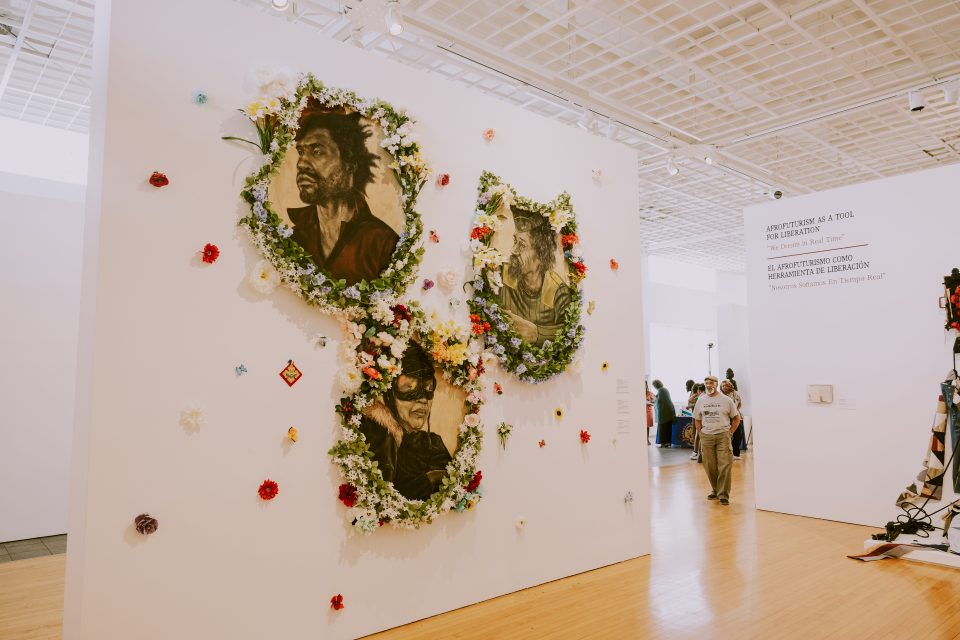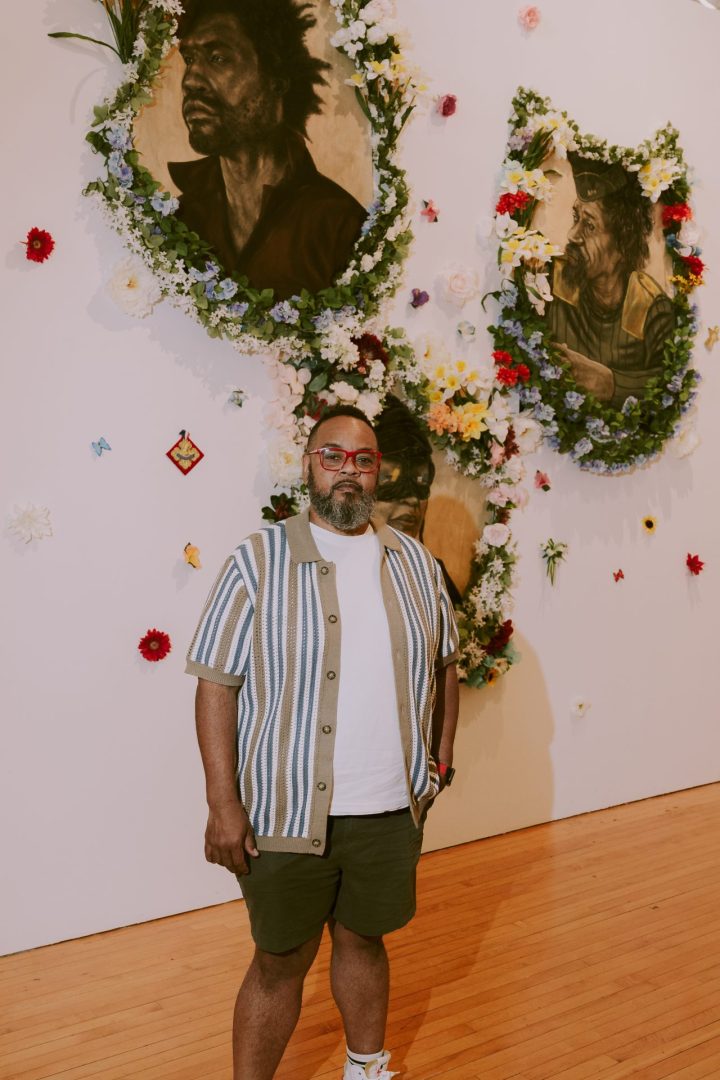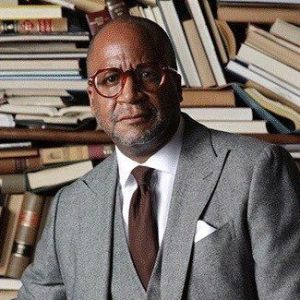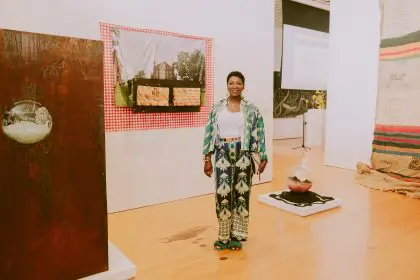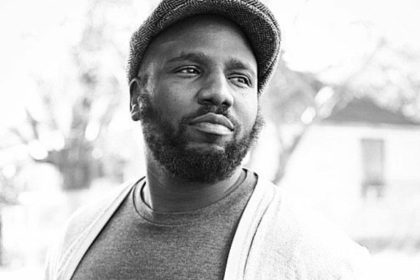Robert A. Pruitt doesn’t just honor the soldiers who were—he memorializes those who might be. For the Buffalo Soldiers National Museum’s “Terms & Conditions: The Promise vs. Reality,” the acclaimed artist has created three large-scale portrait drawings depicting veterans of imaginary wars from past, present, and future. Installed as a triptych forming a makeshift altar wall adorned with memorial flowers, the work draws from Pruitt’s family heritage of funeral directors to create a space of reverence for battles both fought and unfought.
The New York-based artist, whose work has been featured in the Whitney Biennial and is held in collections from the Metropolitan Museum of Art to the Museum of Fine Arts Boston, brings his signature approach of rendering large-scale figurative portraits layered with symbols denoting a radical Black past, present, and future. His fictional veterans honor untold histories, acknowledge struggles we’re currently afraid to face, and imagine conflicts our descendants may be forced to resolve in our absence. Through this Afrofuturist lens, Pruitt creates expansive representations that reject reductive pathologies while building a visual language of Black self-definition across time.
Can you describe your artwork featured in the exhibition and walk us through your creative process?
For this exhibition, I created three large-scale fictional portrait drawings using Conté, charcoal, and pastel. The figures depicted are veterans of imaginary wars—battles from the past, present, and future. My aim was to honor histories that remain untold, the struggles we’re currently afraid to face, and the conflicts our descendants may be forced to resolve in our absence. The works are installed as a triptych, forming a makeshift altar wall adorned with memorial flowers.
How does your piece speak to the meaning and legacy of Juneteenth?
These portraits depict soldiers who have fought—or will fight—for liberation. I hope this installation resonates with the enduring spirit of freedom at the heart of Black history in this country. Juneteenth marks a pivotal moment in that legacy—a delayed but significant realization of emancipation—and this work is in dialogue with that ongoing pursuit.
What role do you believe art plays in preserving and communicating Black culture and history?
Art, particularly when rooted in individual expression, remains one of the few spaces relatively free from institutional and corporate oversight. In a time when truth and history are increasingly contested, the visual arts offer a crucial channel through which artists can freely share, preserve, and imagine Black cultural narratives on their own terms.
How does your work reflect or challenge the social realities we live in today?
Much of my work—both within and beyond this exhibition—centers on Black self-definition and the imagining of futures that affirm our dignity and complexity. I aim to create portraits of us that reject reductive pathologies and instead offer expansive, layered representations grounded in both resistance and possibility.
Do you see your piece engaging with themes of Afrofuturism or reimagining Black futures?
Absolutely. This work engages deeply with Afrofuturist themes. I’m interested in the unseen and unspoken parts of our story—past, present, and future—and in building a collection of figures that exist across time, as a way of reimagining what has been and what could be.
What personal stories or emotions did you draw from when creating this work?
My work often explores the relationship between body and spirit, rooted in the vibrancy of lived experience. For this project, I leaned into themes of memorial and remembrance. I come from a family of funeral directors, and this offered an opportunity to draw from the visual language of memorial aesthetics I grew up around—flowers, symmetry, reverence—to honor those we’ve lost and those we imagine.
